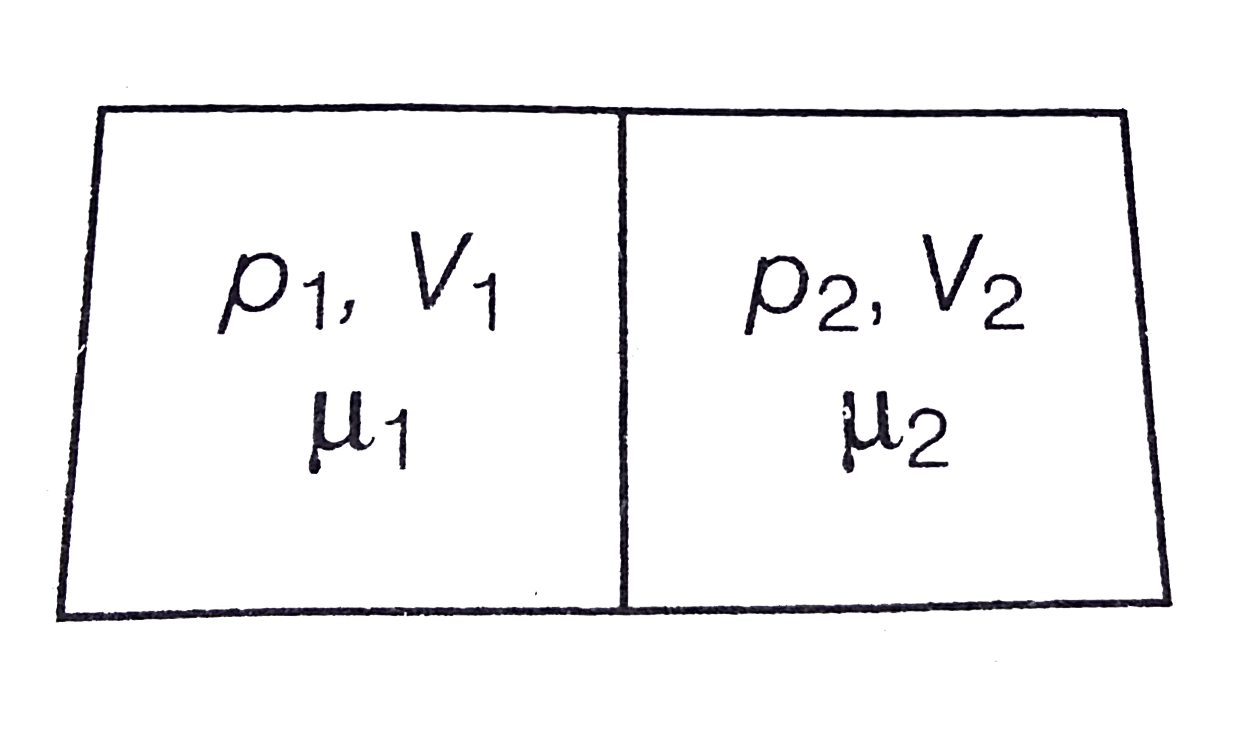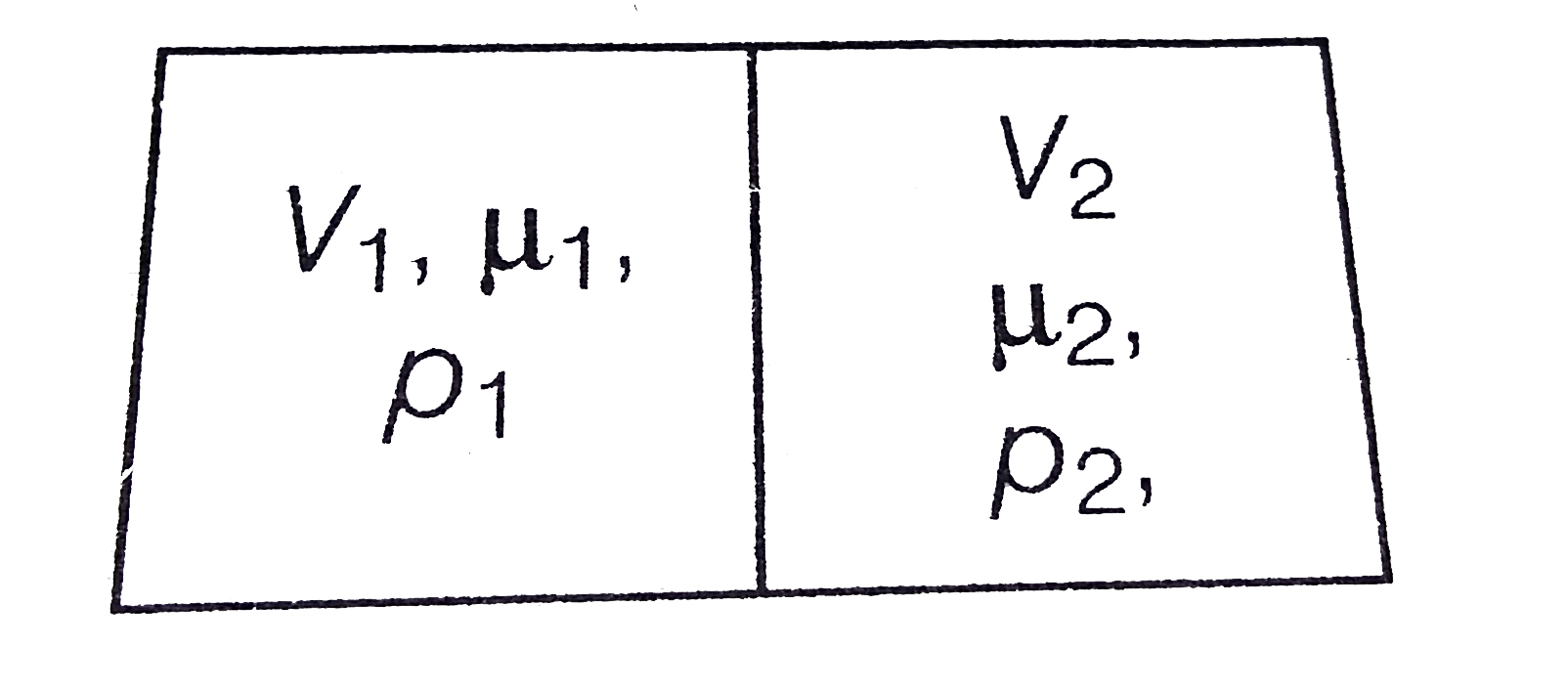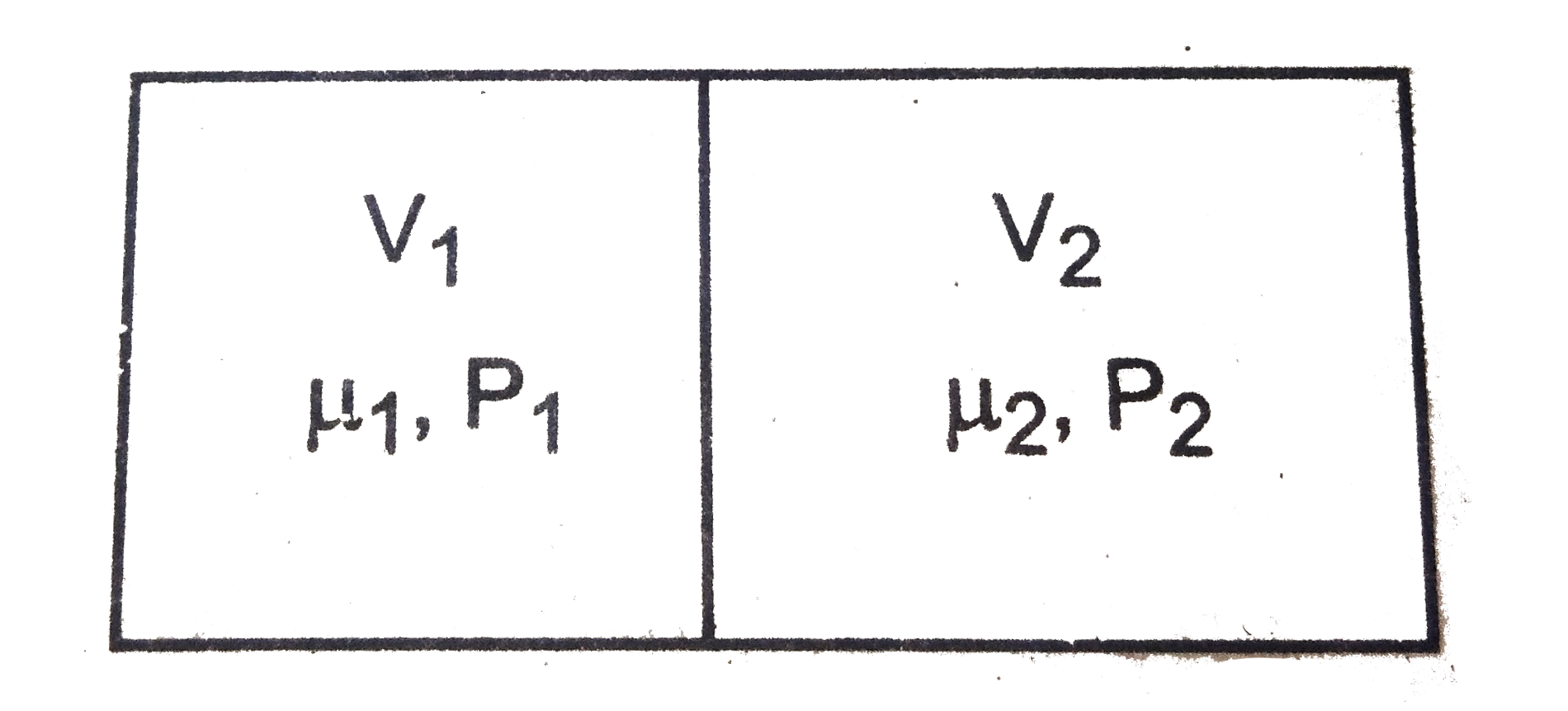The container shown in figure has two chambers separated by a partition of volumes and . The chambers contain and mole of a gas at pressure atm and atm. Calculate the pressure after the partition is removed and the mixture attains equilibrium.


Consider the diagram
For chamber
For chamber
When the parition is removed the gasses get mixed wihtout any loss of energy . the mixture now attains a common equilibrium pressure and the total volume of the system is sum of the volume of individual chamber and .
From kinetic theory of gasses,
Topper's Solved these Questions
Similar Questions
The container shown in Fig. 9(EP).6 has two chambers, separated by a partition, of volumes V1=2.0litreandV2=3.0litre. The chambers contains μ1=4.0andμ2=5.0moles of a gas at pressures p1=1.00atmandp2=2.00atm. calculate the pressure after the partition is removed and the mixture attains equilibrium.

View SolutionA container is divided into two chambers by a partition. The volume of first chamber is 4.5 litre and second chamber is 5.5 litre. The first chamber contain 3.0 moles of gas at pressure 2.0 atm and second chamber contain 4.0 moles of gas at pressure 3.0 atm. After the partition is removed and the mixture attains equilibrium, then, the common equilibrium pressure existing in the mixture is x×10−1 atm. Value of x is___.
View Solution
Knowledge Check
An insulated container of gas has two chambers separated by an insulating partition. One of the chambers has volume V1 and contains ideal gas at pressure P1 and temperature T1. The other chambers has volume V2 and contains ideal gas at pressure P2 and temperature T2. If the partion is removed without doing any work on the gas, the final equilibrium temperature of the gas in the container will be
AT1T2(P1V1+P2V2)P1V1T2+P2V2T1BP1V1T1+P2V2T2P1V1+P2V2CP1V1T2+P2V2T1P1V1+P2V2DT1T2(P1V1+P2V2)P1V1T1+P2V2T2Volume of 0.5 mole of a gas at 1 atm. pressure and 273∘C is
A22.4 litresB11.2 litresC44.8 litresD5.6 litresAn insulated container of gas has two chambers separated by an insulating partition. One of the chmabers has volume V1 and contains ideal gas at pressure P1 and temperature T1.The other chamber has volume V2 and contains ideal gas at pressure P2 and temperature T2. If the partition is removed without doing any work on the gas, the final equilibrium temperature of the gas in the container will be
A(T1T2P1V1+P2V2P1V1T2+P2V2T1BP1V1T1+P2V2T2P1V1+P2V2CP1V1T2+P2V2T1P1V1+P2V2DT1T2(P1V1+P2V2)P1V1T1+P2V2T2
Two chambers containing m1 and m2 kg of gas at pressure p1 and p2 are later connected. What will be pressure of the mixture.
View Solution5 L of methane gas at 2 atm pressure is compressed to 1.6 L at contant temperature. Calculate the final pressure.
View SolutionA 10.0 litre container is filled with a gas to a pressure of 2.00 atm at 0∘C. At what temperature will the pressure inside the container be 2.50 atm ?
View SolutionVolume of 0.5 mole of a gas at 1 atm. Pressure and 273 K is
View SolutionCalculate the moles of an ideal gas at pressure 2atm and volume 1L at a temperature of 97.5K
View Solution
